Information is power. Plenty of leaders in philosophy, politics, business and other sectors have invoked this phrase, including one of our founders, Sam Walton. At the time, he was referring to sharing information throughout the workplace. Because information leads to problem solving and innovation.
This timeless belief is core to the Walton Family Foundation’s latest investments in journalism.
The foundation focuses on solutions to some of today’s most challenging issues – whether that’s providing all kids with an education that prepares them for their future, ensuring access to clean and sufficient water or building communities where all residents can thrive. Community-led change is central to our approach. And communities need information to drive that change.
We want to learn the most innovative and cost-effective ways to reach diverse sectors of communities through journalism and the news.
Across each of our programs – Environment, Home Region and Education – the foundation has long supported journalism to help inform communities about the issues we hope to address together.
But does everyone have access to that information?
As the news industry evolves at a dizzying pace, we are eager to learn about innovative efforts to reach historically underrecognized audiences. When the foundation launched its 2025 Strategic Plan, we began a new effort to learn how our journalism support could help us better serve communities that may not have access to trusted, accurate and relevant information. We want to learn the most innovative and cost-effective ways to reach diverse sectors of communities through journalism and the news.
In the first year of this effort, the foundation supported newsrooms and journalism industry organizations to identify how local, diverse communities get their news today.
To learn from different perspectives, we supported news organizations that are researching the information needs of their audiences and creating content for their communities, especially those that are serving audiences of color.
While the work is still new, our learnings align with those across the field of nonprofit news. This demonstrates the importance of community engagement, innovative approaches to news distribution and supporting newsrooms to do the work they know is critical. Specifically, we have found that:
Content creation is most successful when audience engagement is designed with community input from the get-go. Take, for example, At the Crossroads, managed by the Institute for Nonprofit News. INN brought together both tribal outlets and other network newsrooms to explore the state of the economy in rural Indigenous communities.
At the outset, At the Crossroads deployed unique audience engagement exercises, including surveys, community events and proactive republication efforts. These exercises showcased commitment to responding to community information needs and helped build trust amongst stakeholders, which can be a challenge. The takeaway? Prioritize content creation that focuses on who the audience is, how they engage and the impact of knowledge they gain from the content.
News products must meet users where they are. Documented is a nonprofit news organization serving New York City’s Chinese, Caribbean and Spanish-speaking immigrant communities. This group makes up 12% of the city’s population. After community listening sessions, Documented is successfully using WhatsApp to deliver news to Spanish-speaking audiences, an app popular within the community.
The foundation is now providing support to develop similar products to serve the city’s Chinese and Caribbean communities. The products are based on findings from audience research that reached more than 1,100 local immigrants. The lesson? Community engagement and content distribution must happen across channels their respective audiences already embrace.
Trust and financial resources are essential for building partnerships between national newsrooms and local BIPOC news. The Center for Public Integrity engaged four BIPOC-serving newsrooms to research how to build successful partnerships. CPI learned that local newsrooms are interested in equitable funding to co-produce projects that enhance local accountability. However, local newsrooms frequently experience resource limitations and struggle to participate equally in collaborations when there's a disparity in funding and partnership demands. The bottom line? Local partners need funding to be equal partners. And training, without financial support, is not helpful.
When it comes to out-of-the-box resources, make sure to customize both training and support. Across the U.S., including in rural areas, people want more access to information about local government. City Bureau’s Documenters Network trains and pays community members to attend and annotate government meetings. The program harnesses their collective knowledge, relationships and capacity to create a powerful new information resource. The foundation’s support is helping the program scale into more communities with new resources.
This includes a Documenters startup guide for organizations in new communities to pilot and plan a Documenters site, and the City Builder tool, a software platform that reduces the development time for new Documenters sites. We learned that customization and simplicity of use are key when it comes to expanding successful programming.
For the foundation, the learning journey continues. Our effort now includes more than 25 organizations working in 15 states. From rural communities in the Deep South, to farmers in coastal towns and immigrants in large metropolitan areas. We are committed to continuing to share the lessons we learn along the way with those in the philanthropic and nonprofit sectors working to ensure people are not excluded from decisions that impact their lives.




